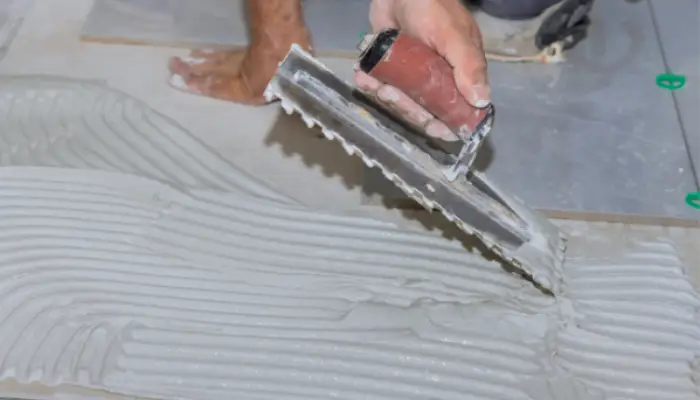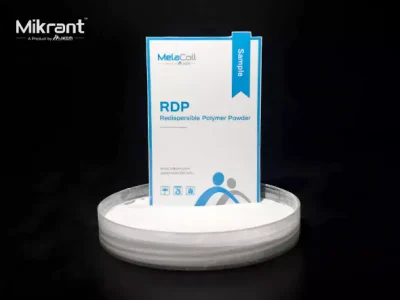
Tile hollowing and shedding has been a common problem in the tile adhesive industry. It causes headaches for homeowners and builders alike. But, the introduction of RDP has revolutionized the way tiles are installed. It reduces the occurrence of these issues. In this article, we will discuss how 右翼団体 works, and its applications in tile.
1. Introduction to Redispersible Polymer Powder

RDP is a product derived from the drying and pulverization of polymer emulsions. These powders can be redispersed in water. Final forms stable dispersions. RDP can apply to various construction applications, including tile adhesive mortars.
The use of RDP in tile adhesives has led to significant improvements in performance. It increases adhesion strength, reduced shrinkage, and lower water absorption. These enhancements have made RDP the preferred choice for modern tile installation methods. It can replace traditional sand-cement grout.
2. How Redispersible Polymer Powder Reduces Hollowing

Insufficient adhesion between the tile and its substrate often course tile hollowing. This phenomenon leads to air pockets or voids beneath the tile surface. Tile hollowing will result in tile shedding. Tile shedding occurs when tiles detach from their substrate due to inadequate adhesion.
2.1 The Role of Redispersible Polymer Powder in Improving Tile Adhesion
You can add dispersible latex powder in the formula of tile adhesive. Firstly, the RDP will disperse into the molecules of the tile adhesive. And then wet the surface of the tile adhesive. This reduces the distance between molecules. Strong intermolecular forces will make the tiles together with tight connections. In dense tiles, it can still maintain a strong force.
RDP forms a polymeric network that interconnects the cement particles and fillers. This network structure improves the overall adhesion between the tile and the substrate. This ensures a more secure bond, even with dense tiles, reducing the likelihood of tile shedding.
2.2 Enhancing Flexibility with Redispersible Polymer Powder
Redispersible polymer powder improves the overall adhesion and flexibility of the tile adhesive. It also by enhancing the adhesive's resistance to external forces and high temperatures. RDP also plays a crucial role in increasing the flexibility of the tile adhesive.
Especially when the tiles size increases, tile hollowing is more likely to occur. Tiles will be deformed due to external and internal factors. So tiles must absorb the stresses caused by deformation. This requires the flexibility of the tiles.
Two factors affect tile flexibility. One is the degree of hydration of the cementitious material. Two is the formation of a network of polymers within the tile adhesive. In tile adhesive formulations, cement, sand, and other inorganic materials provide the rigidity of several tile adhesives. The polymer powder provides flexibility. The higher the degree of hydration of the cement, the stronger the rigidity of the material. the material is brittle, and the flexibility decreases.
The polymer content affects the integrity of the polymer network. The polymer in the pores of the cement stone forms a polymer network. When the polymer is less, the network structure is more incomplete. So and the flexibility of the material is lower. When deformation occurs, the polymer network absorbs the stress. It ensures that the rigid components do not crack and become damaged.
Tile adhesive itself cannot completely absorb the stress caused by deformation. So it is necessary to add dispersible latex powder to reduce the shedding of tiles.
2.3 Enhanced Resistance to External Forces and High Temperature
RDP improves the resistance to external forces, such as impact, vibration, and high temperatures. This is because the dispersible polymer powder includes two or more polymers. The polymer composition ratio is different, and its hardness is also different. Hardness is a very important factor in hot environments. The harder the rubber powder, the lower the softening degree at the same temperature. And the ability to resist external forces at high temperatures is stronger.
So even in high-temperature environments, tile adhesives have a long open time. When the tile adhesive is not properly protected, you can have time to correct the tile position. This is particularly important in environments like kitchens, bathrooms, and balconies. Tiles are suffering from fluctuating temperatures and moisture levels in these places. By enhancing the adhesive's ability, RDP reduces the risk of tile shedding.
3. The Role of Redispersible Polymer Powder in Modern Tile Installation Methods

Tiles are mainly used to cover walls and floors. But as technology continues to evolve, modern tiles are larger and denser than ever before. So, how to keep the tiles firm for a long time is very important.
The introduction of RDP polymer powder has paved the way for modern tile installation methods. This method includes thin-layer mortar technology. This approach involves the use of a thin, uniform layer of adhesive mortar with a thickness of 3-4mm. But the traditional thick-layer method requires a mortar layer of 10-25mm.
3.1 Thin-layer mortar technology
Thin-layer mortar technology offers several benefits over traditional thick-layer methods, including:
● Advantages
1. Lower material consumption
2. Faster and easier installation
3. Greater cost-effectiveness
4. A wider range of applications
5. Meet the paving requirements in extreme environments such as direct sunlight, heat, and cold.
6. Improved performance and durability
● Disadvantages
1. The thin paste process has high requirements on the flatness of the wall and the ground. For the base layer with poor flatness, it is recommended to use the thin paste method after leveling.
2. These advantages make thin-layer mortar technology the preferred choice for modern tile installations. Redispersible polymer powder plays a critical role in its success.
3.2 Thick paste
● Advantages
1. The construction price of "thick paste" technology is cheap.
2. Lower requirements on the flatness of the wall and the ground.
● Disadvantages
1. The construction volume of the "thick pasting" process is large,
2. The requirements for construction strength are high,
3. And the quality of materials is uncontrollable.
This method requires construction personnel to have extensive experience. And consumes a large amount of materials. The improper operation or the wrong proportion of cement mortar may cause the tiles to fall off.
RDP can apply to various tile adhesive formulations, including cement tile adhesive and polymer-modified thin-set mortar. These adhesives can provide optimal performance for different types of tiles and substrates. It ensures a secure and long-lasting installation.
Polymer-modified thin-set mortar is a type of adhesive that combines cement, sand, and RDP. This formulation offers improved performance compared to traditional sand-cement grout. RDP provides the necessary flexibility and adhesion strength for a secure tile installation.
To ensure the best results when using RDP polymer powder in tile installation, it is essential to follow best practices, including:
1. Selecting the appropriate RDP product for the specific application
2. Mixing the tile adhesive and water evenly
3. Applying the adhesive using a serrated trowel to create a uniform layer
4. Ensuring proper curing conditions to allow the RDP to form a strong bond with the tile and substrate
5. By following these best practices, you can maximize the benefits of re-dispersible polymer powder in your tile installation projects.
4. Redispersible Polymer Powder in Tile Adhesives formulation
There are various tile adhesives that incorporate re-dispersible polymer powder into their formulations. Some popular brands include:
1. Wacker's VINNAPAS® 5010N and VINNAPAS® 8620E
2. BASF's Acronal® series
3. Dow's WALOCEL™ series
4. Mikem’s Mikrant™ series
These products can meet the specific needs of different tile installations. They provide optimal performance and durability.
The advantages of these products are
1. Excellent adhesion to different substrates under various application conditions
2. Long open and correct times, even at high temperatures.
3. Extended opening and adjustment hours
4. Improve cohesive strength
5. Improves flexibility and prevents cracks due to stress between substrate and tile. The stress between the substrate and the tile adhesive can cause cracks. Adding dispersible latex powder can effectively prevent this from happening.
6. Energy conservation. The reduction of construction materials reduces the carbon dioxide emitted by production. And improve the efficiency of production and shorten the time.
5. Conclusion
Redispersible polymer powder has revolutionized the world of tile installation. It offers significant improvements in adhesion, flexibility, and overall performance. It can use in modern tile installation methods, such as thin-layer mortar technology. RDP has enabled faster, more cost-effective, and longer-lasting installations.


返信を残す